What Is Posterior Pelvic Tilt & Why Is It Bad?
(If you want to skip reading, I have a VIDEO at the bottom that explains things such as the posterior pelvic tilt exercise I mention here in great detail!)
Now, right now, I bet you are reading this thinking, “Who Cares!”
Or maybe you’re thinking, “Posterior Pelvic Tilts….more like Posterior SNORE-elvic Tilts!”

And I don’t blame you for thinking this way. But in fact, a posterior pelvic tilt is more serious than its name implies.
Essentially, a posterior pelvic tilt refers to your pelvis tilting backwards.
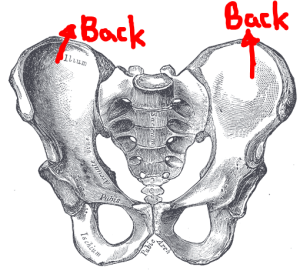
Although this may not seem like a big deal, it can be. For what rests on top of your pelvis? You got it, your Spine!
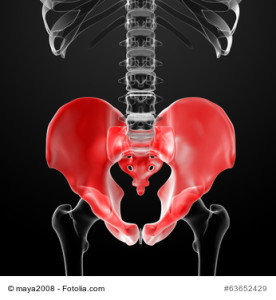
Basically, the movement of your pelvis will influence your spine. Therefore, if your pelvis is tilting backwards, your spine will get dragged along. Essentially, your spine will become more flexed. This will also be known as a kyphotic position, or backwards curve.
The normal position for your lower back to be in is in a lordotic position. This means a forward curve. In this position, your spine is more stable and more able to absorb shock.
To better visualize this position, think of how you would slouch back in a chair. In this position, your pelvis is tilting back. Your spine is also curved back. In this position, considerably more stress is being placed on your spine.
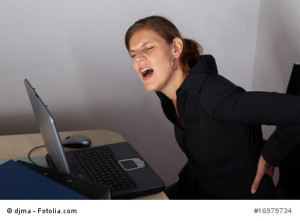
Because we sit so much in our daily lives, this can lead to problems. Being in a posterior pelvic tilt position sitting and standing places extra stress on your body. Over time, you can strain muscles, sprain ligaments, and even impact the discs in your spine.
Your spine is made up of intervertebral bones. Between each bone is a disc. That disc has an inner gooey layer within it. The problem with sitting in a posterior pelvic tilt is the liquid is pushed back into the disc.
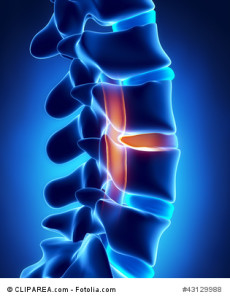
Essentially, being in a bad position for weeks and months at end can put your body at risk. Eventually, it is possible this inner layer can escape the outer layer. This is called a disc herniation, which isn’t a good thing! When this happens, nerves are being pressed on. This can lead to nerve pain, which is not pleasant. You want to prevent this from happening.
How Tight Hamstrings Cause A Posterior Pelvic Tilt
The hamstrings are very tight in many of us! The hamstrings are a muscle group in the back of our legs. This muscle group attaches directly to our pelvis.
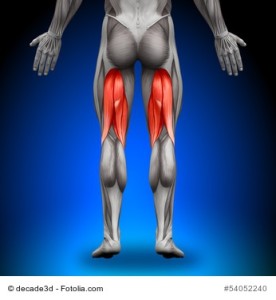
The issue is that in today’s society, we sit so much! One of the jobs of the hamstring muscles is to bend our knee. When we sit, our knees are always bent! Do you see now how this muscle can get so tight!
When the hamstrings are very tight, they can tilt our pelvis backwards. Therefore, if you are sitting for extended periods of time, this could be a major issue. Your hamstrings may be pulling your pelvis back, which will drag your spine along. This can place your lumbar spine into more of a kyphotic, less stable position.
Obviously, this is an issue you will want to fix!
Read More Down Below…
The Posterior Pelvic Tilt Exercise To Do!
If there is one posterior pelvic tilt exercise you should highly consider doing, it is this.
You want to stretch out your Hamstrings! As I said above, because they get very tight, you will want to fix this.
You can do this posterior pelvic tilt exercise sitting or standing.
To do it sitting, sit at the edge of your chair. Then extend your leg out, placing your heel on the floor. Keep your knee straight and bend forward at your hips. Hold that stretch for 30 seconds and do it twice on each leg.
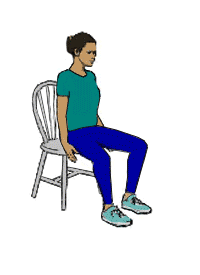
Doing this posterior pelvic tilt exercise standing is quite similar. First, find an elevated platform. Then, place your ankle on that platform. Keep your knee straight and lean forward. Hold that stretch for 30 seconds and repeat it twice on each leg.

In Summation Of Posterior Pelvic Tilts & What To Do
A tilted back pelvis essentially drags back your spine, placing more stress on it. Because of this, you will want to correct it.
In my video here, I will go into great depth explaining the above article and more to you!
Hopefully that video further clarifies just why the hamstring posterior pelvic tilt exercise I mentioned is quite important. I believe doing this exercise should substantially help you out. Of course, there are a myriad of posterior pelvic tilt exercise choices to choose from, but this one should go a long way!
Also, just to add, I recently wrote an article on anterior pelvic tilt and how to address it, since this is something you want to get out of just like a backwards tilt.
If You Liked This Article, Leave A Comment Down Below!
